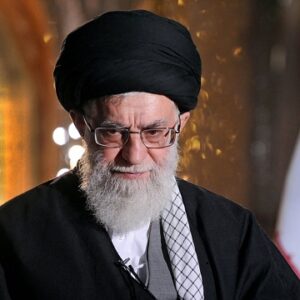Ali Khamenei, Iran’s current Supreme Leader, has been in office since 1989. He is considered the most powerful political authority in Iran, even more powerful than the country’s President, having been named 21st on Forbes’ list of “The World’s Most Powerful People.” Human rights, he says as a Shia cleric, are a fundamental premise underlying Islamic teachings. He was the President of Iran for numerous years before becoming the Supreme Leader of Iran. He was a significant figure in the 1979 Iranian Revolution, in which the Pahlavi dynasty, led by Mohammad Reza Shah Pahlavi, was deposed and an Islamic Republic, led by Grand Ayatollah Ruhollah Khomeini, was created. Ali Khamenei wielded enormous political authority as a close confidant of Ruhollah Khomeini. Following the assassination of Mohammad-Ali Rajai in 1981, he was elected president and became the first cleric to hold the position. He was seriously injured in an attempted murder just before becoming president, paralyzing his right arm, yet nothing could stop him from pursuing his political ambitions. Following the death of the first Supreme Leader of Iran, Ruhollah Khomeini, he became the second person to occupy the position.
Childhood and Adolescence
In Mashhad, Iran, he was born on July 17, 1939, the second of eight children to Seyyed Javad Khamenei and Khadijeh Mirdamadi.
He began his religious studies in the Mashhad hawza at a young age, where he was mentored by Sheikh Hashem Qazvini and Ayatollah Milani.
He went to Qom in 1958 to study with Seyyed Hossein Borujerdi and Ruhollah Khomeini, later being active in the Islamic events of 1963.
For his engagement in Islamic activities, he was repeatedly imprisoned by Iran’s security agencies. His friendship with Khomeini was strong and would last a lifetime.
Career of Ali Khamenei
In 1979, he founded the Islamic Republic Party with other like-minded clerics including as Mohammad Beheshti, Mohammad Javad Bahonar, Abdul-Karim Mousavi Ardebili, and Akbar Hashemi Rafsanjani.
In 1980, he also served as Deputy Minister of Defense and as a supervisor of the Islamic Revolutionary Guards for a short time.
In June 1981, the Mojahedin Khalq Organization, an armed opposition group, attempted to assassinate him by planting a bomb inside a tape recorder while he was giving a lecture. He was severely hurt in this attack, and despite his survival, he was left without the use of his right arm.
Following the assassination of President Mohammad Rajai, Khamenei was elected President of Iran by a landslide vote in the Iranian presidential elections in October 1981, making him the first religious to hold the position.
During the Iraq-Iran War in the 1980s, he assisted in guiding the country and formed ties with the Revolutionary Guards. In 1985, he was re-elected. He was also the chairman of the Supreme Defense Council and the Supreme Cultural Revolution Council while in office.
Ruhollah Khomeini, Iran’s Supreme Leader, died in 1989, and Ali Khamenei took his place as the country’s new Supreme Leader on June 4, 1989.
As Iran’s Supreme Leader, he wields even greater power than the country’s president; in fact, even the democratically elected president’s inauguration is subject to the Leader’s permission.
Iran’s nuclear program has sparked worldwide debate for decades, and he reignited the topic by issuing a fatwa prohibiting the manufacture, storage, and use of nuclear weapons.
Despite being a devout Muslim, he favors stem cell research and therapeutic cloning, as he has always supported scientific advancement in Iran. He believes that the country should invest more in research and technology, and that intellectuals should be given better importance.
His connections with Iran’s presidents have always made the news because he holds a position with more power than the president. In the early 1990s, he enjoyed a pleasant working relationship with President Hashemi Rafsanjani.
When President Mohammad Khatami took office in 1997, however, the two men’s beliefs frequently clashed, and their friendship was strained. While Khatami advocated for political and social reforms as well as a more democratic Islamic state, Khamenei was more orthodox.
Despite the fact that he has stated that human rights are a fundamental concept underlying Islamic teachings, he has been repeatedly chastised by the western media for Iran’s poor human rights situation. He believes that homosexuality is sinful and that women should be required to wear the hijab. He has also incurred the fury of the media for restricting press freedom.
His racist and anti-Semitic threats against Israel have garnered him and the Iranian leadership international condemnation. He gained notoriety for referring to Israel as a “rabid dog” and a “cancerous growth.” He did, however, support Egypt’s movement against its government, which he saw as an Islamic awakening.
Major Projects of Ali Khamenei
He was a significant figure in the Iranian revolution of 1979, which saw the Pahlavi monarchy overthrown and the Islamic Republic of Iran established.
During the Iran-Iraq War, he was one of the country’s most important leaders.
Personal History and Legacy
In 1964, he married Khojaste Bagherzadeh. The couple has two girls and four sons.


